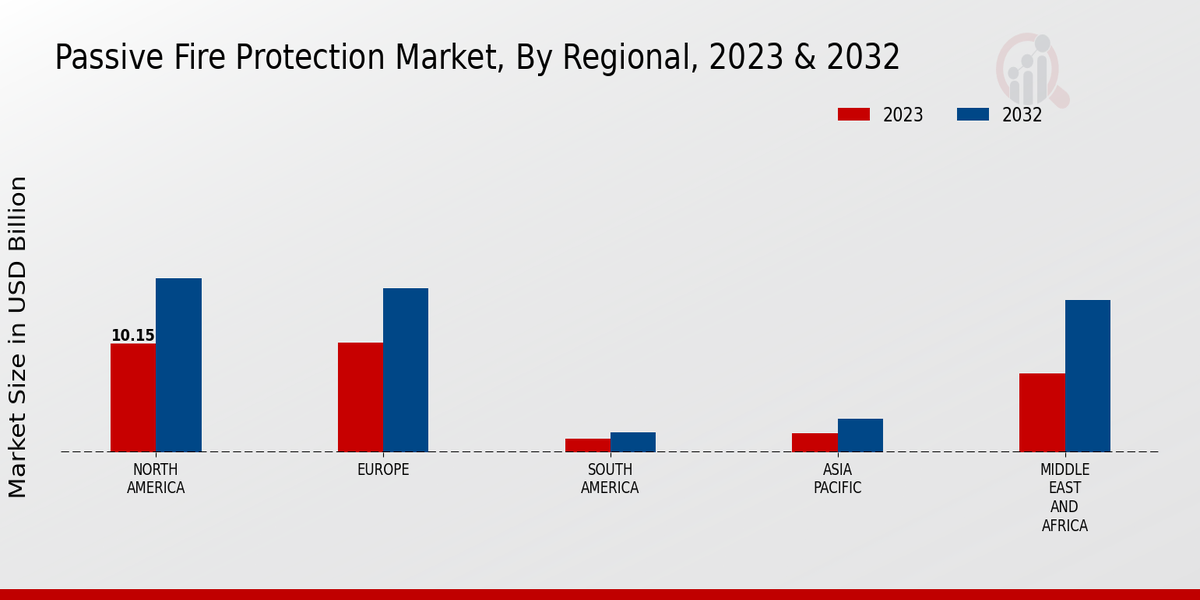Increasing Urbanization
The trend of increasing urbanization is a key driver for The Global Passive Fire Protection Industry. As more people migrate to urban areas, the demand for residential and commercial buildings rises. This surge in construction activities necessitates the implementation of effective fire protection measures to ensure safety and compliance with building codes. According to recent data, urban areas are expected to house over 68% of the global population by 2050, which could lead to a significant increase in the demand for passive fire protection solutions. Consequently, manufacturers and service providers in The Global Passive Fire Protection Industry are likely to focus on developing innovative products that meet the growing safety requirements of urban infrastructures.
Technological Innovations
Technological innovations play a pivotal role in shaping The Global Passive Fire Protection Industry. Advancements in materials science have led to the development of more effective fire-resistant materials, enhancing the performance of passive fire protection systems. For instance, the introduction of intumescent coatings and advanced fire barriers has improved the ability of structures to withstand fire exposure. Furthermore, the integration of smart technologies into fire protection systems is becoming increasingly prevalent. These innovations not only enhance safety but also streamline compliance with regulatory standards. As a result, The Global Passive Fire Protection Industry is likely to experience a surge in demand for cutting-edge solutions that leverage these technological advancements.
Rising Awareness of Fire Safety
The rising awareness of fire safety among consumers and businesses is driving growth in The Global Passive Fire Protection Industry. Educational campaigns and high-profile fire incidents have heightened public consciousness regarding the importance of fire safety measures. This awareness translates into increased investments in passive fire protection systems, as organizations seek to mitigate risks and protect lives. Market data indicates that the fire protection systems market is projected to grow at a compound annual growth rate of approximately 7.5% over the next five years. This growth reflects a broader recognition of the need for comprehensive fire safety strategies, further propelling the demand for passive fire protection solutions.
Growth in the Construction Sector
The growth in the construction sector is a primary driver for The Global Passive Fire Protection Industry. As economies recover and expand, construction activities are witnessing a resurgence, particularly in emerging markets. This growth is accompanied by an increased focus on safety and compliance, leading to a heightened demand for passive fire protection systems. Market analysis suggests that the construction industry is projected to grow at a rate of approximately 5.4% annually over the next decade. This expansion presents opportunities for manufacturers and service providers in The Global Passive Fire Protection Industry to offer innovative solutions that cater to the evolving needs of the construction sector.
Stringent Building Codes and Regulations
Stringent building codes and regulations are a significant driver of The Global Passive Fire Protection Industry. Governments and regulatory bodies worldwide are implementing more rigorous fire safety standards to protect lives and property. Compliance with these regulations often necessitates the installation of passive fire protection systems in new and existing buildings. For example, many jurisdictions require the use of fire-rated walls, doors, and ceilings in commercial and residential constructions. This regulatory landscape creates a robust demand for passive fire protection solutions, as builders and property owners strive to meet legal requirements. Consequently, The Global Passive Fire Protection Industry is expected to benefit from the ongoing evolution of fire safety regulations.




















Leave a Comment